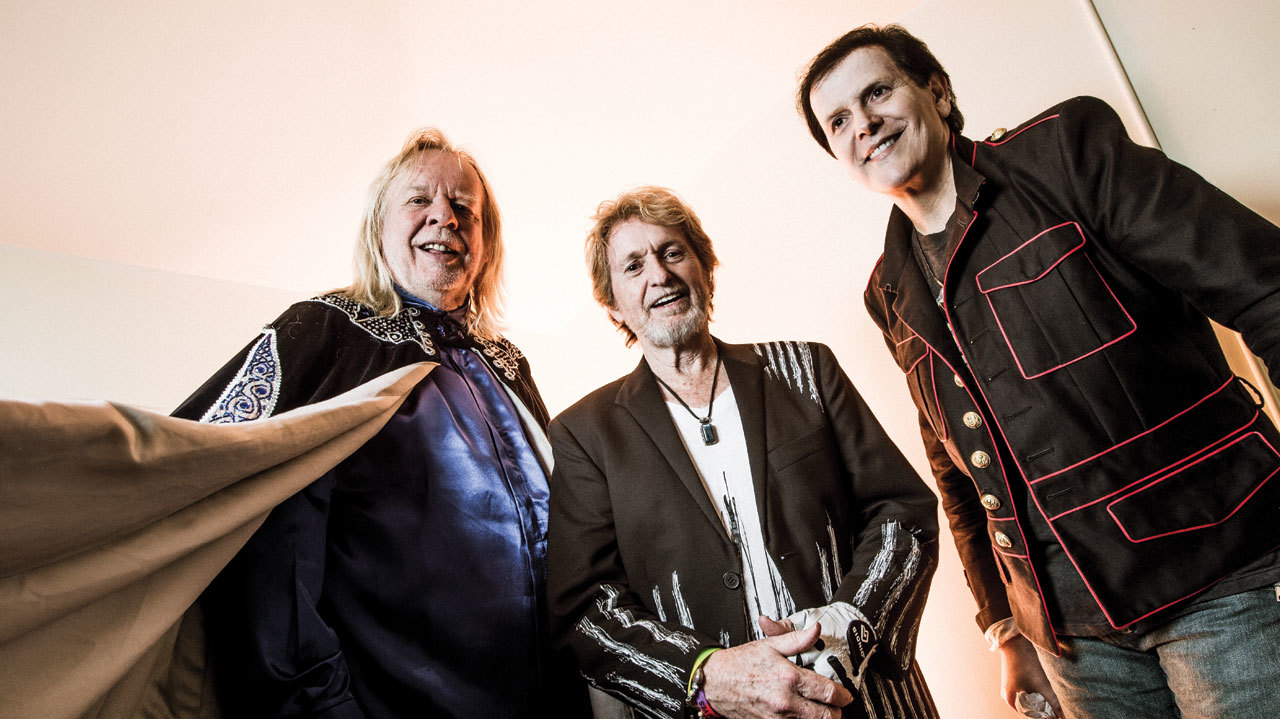 The collaboration between Jon Anderson, Trevor Rabin, and Rick Wakeman—three iconic members of Yes—promised to be a progressive rock supergroup that would bridge the past and present of the genre. Formed in 2016 and branded as ARW, the trio set out to rekindle the spirit of their collective history while forging new musical paths. However, despite early successes, including a well-received live album and two global tours, the group disbanded in 2020, leaving fans questioning what went wrong.
The collaboration between Jon Anderson, Trevor Rabin, and Rick Wakeman—three iconic members of Yes—promised to be a progressive rock supergroup that would bridge the past and present of the genre. Formed in 2016 and branded as ARW, the trio set out to rekindle the spirit of their collective history while forging new musical paths. However, despite early successes, including a well-received live album and two global tours, the group disbanded in 2020, leaving fans questioning what went wrong.
### A Promising Start
When ARW was announced, it was seen as a spiritual successor to the classic Yes lineup, albeit with a modern twist. Fans were excited to see Anderson, Rabin, and Wakeman join forces after years of working separately. The group focused on reinterpreting Yes classics and hinted at creating new music. Their live performances showcased their enduring chemistry, with Anderson’s ethereal voice, Wakeman’s virtuosic keyboard work, and Rabin’s melodic guitar stylings blending seamlessly.
Their 2018 live album, *Live at the Apollo*, captured the energy of their performances and reminded fans of the trio’s capability to bring the progressive rock sound to new heights. However, despite these initial victories, ARW’s potential was never fully realized.
### Unrealized Studio Album
One of the most glaring disappointments of the ARW era was the absence of a studio album. While rumors of new material circulated, the group never managed to release an original record. Anderson, in recent interviews, attributed this failure to poor management and external pressures. “It’s very simple—it was just bad management,” he explained. According to Anderson, conflicting priorities and “outside influences” created an environment where creative synergy became increasingly difficult.
Fans and critics alike speculated that logistical challenges also played a role. With the trio living in different parts of the world and juggling individual projects, aligning schedules for studio work became a monumental task. The lack of a cohesive vision may have further contributed to the group’s inability to deliver on their promise of new music.
### Internal Tensions and Fragmentation
While Anderson has refrained from directly criticizing his bandmates, there are indications that interpersonal dynamics may have strained the collaboration. Wakeman and Rabin, both prolific artists in their own right, had different creative approaches. Balancing Wakeman’s classical influences, Rabin’s cinematic compositions, and Anderson’s spiritually driven artistry proved to be a challenge. Over time, these differences may have eroded the unity that initially brought them together.
Adding to the complexity was the shadow of Yes’s legacy. Fans had high expectations for ARW to emulate or surpass their classic work with Yes, but the weight of this legacy may have hindered their ability to create something entirely fresh. Wakeman, in a separate interview, noted the difficulty of living up to such monumental expectations while also trying to innovate.
### The End of ARW
By 2020, ARW had effectively dissolved. The group’s second tour ended with no clear plans for future projects, and rumors of creative disagreements became widespread. Anderson acknowledged the split in subsequent interviews, admitting disappointment but emphasizing his focus on new ventures. For Wakeman and Rabin, the dissolution marked a return to their respective solo careers, with both continuing to release music and tour independently.
### What Could Have Been
The demise of ARW left many fans wondering about the “what ifs.” The trio’s live performances demonstrated that their combined talents still had the power to captivate audiences. Yet, the lack of new material and unresolved tensions suggest that ARW’s foundation was not as solid as it seemed. Their story is one of immense potential cut short by mismanagement, logistical difficulties, and the pressures of living up to a towering legacy.
Despite the group’s premature end, Anderson, Rabin, and Wakeman continue to celebrate their shared history. Anderson’s solo work often includes reimaginings of Yes classics, while Wakeman and Rabin maintain active musical careers. Though ARW may be over, the individual contributions of these three legends continue to resonate with progressive rock fans around the world.
For now, ARW’s story serves as a bittersweet reminder of what might have been—a tantalizing glimpse of a reunion that, while fleeting, reignited the imagination of Yes fans and left behind a legacy of unfulfilled dreams.
